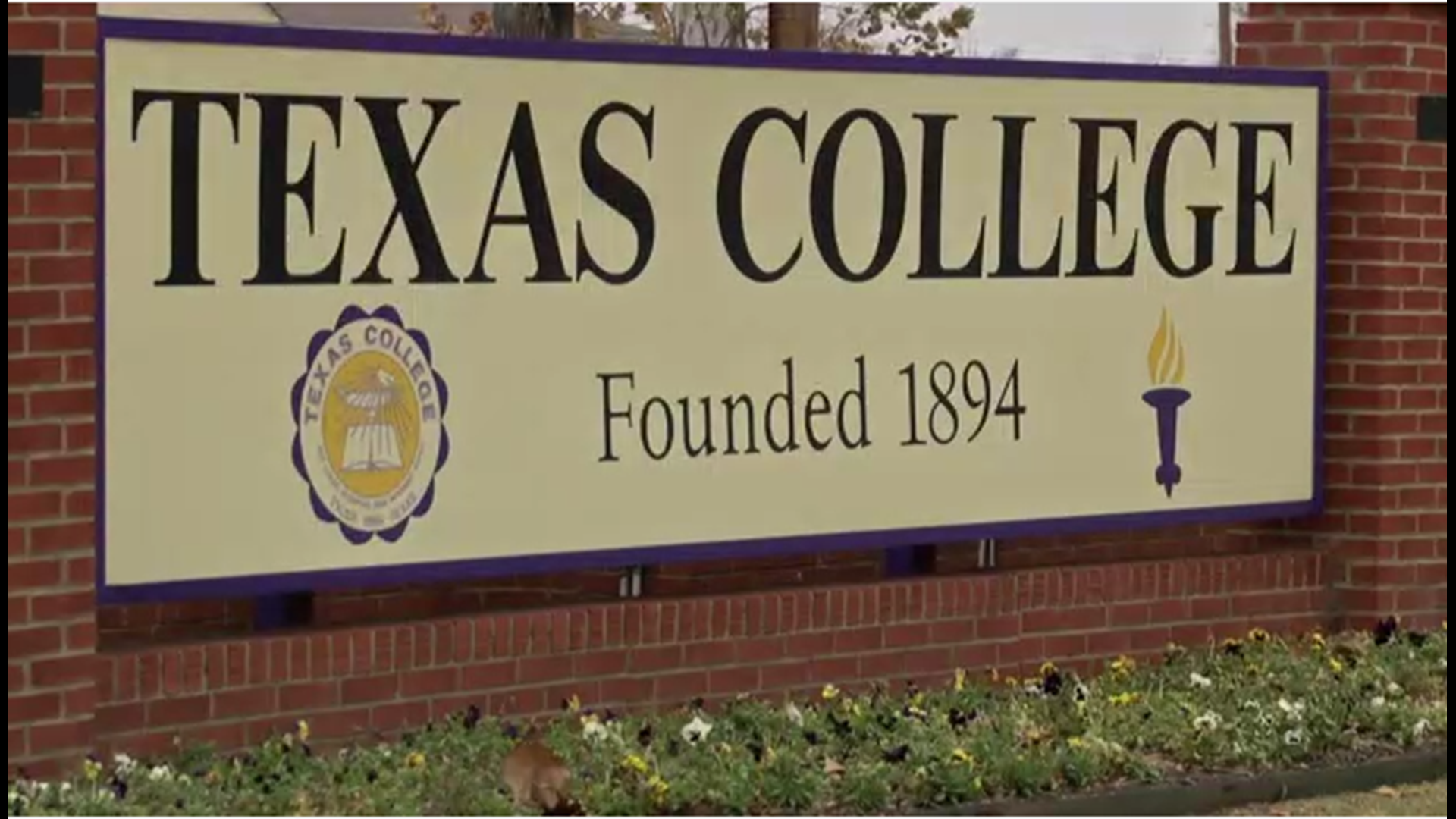TYLER, Texas — There are 101 historically black colleges and universities throughout the county.
In all, Texas has nine HBCUs across the state, with East Texas being home to three of those; Wiley College, Jarvis College and Texas College.
All three were established with a similar purpose in mind more than a century ago.
“So shortly after the period of reconstruction, we have a number of institutions that were found, primarily historically black colleges for the education of blacks," Texas College President Dwight Fennell said. "HBCUs were founded primarily for the education of black people as they were considered a disenfranchised people during that period."
The Higher Education Act of 1965 officially designated Historically Black Colleges and Universities as schools founded before 1961 with the mission of educating black Americans.
“Wiley was the black community," Wiley alum Carol Moore said. "That was basically for education, that’s all that we had was Wiley College. It did play an important part in the community and the life of citizens of Marshall. That was all we had but it was good. You could not get anything better anywhere else at that particular part in history."
Moore graduated from Wiley in 1966. Now, she serves an educator at David Crockett Elementary in Marshall.
“When I finished Wiley, we were at a time in history where I could not work at David Crockett," Moore explained. "I could not even apply for a job at David Crockett and I’m here. I’ve also had the opportunity to teach on the campus of ETBU, which back then that was not foreseen.”
Since this original indoctrination into education, many HBCUs worked to reinvent themselves to continue relevancy with today's young people.
“I think that since the founding of many HBCUs, the role and scope and the mission has become more comprehensive to embrace a number of opportunities for those that we serve,” President Fennell said.
Texas College is celebrating their 125th anniversary this year, but they are not the oldest in the area. That proud distinction belongs to Wiley College.
“Going to Wiley, I actually had a chance to meet people from all over the world and see different perspectives of other students," Wiley alum and Davy Crockett Elementary School Principal Angela Fitzpatrick said. "How they were raised, how they grew up, their cultures, their traditions.”
Diversity is a big topic on these ever-changing campuses.
According to the National Center for Educational Statistics, 23 percent of students at HBCUs in 2016 were not black.
“Well I’ve been here six months and again I was really surprised that we have African American students, we have European students," Eric Stringfellow, of Jarvis College, said. "They all live together and they all really really seem to bond together. I think it’s one of the most diverse campuses I’ve seen. Some of that may have to do with our athletic teams and how we recruit. Again, the student population is pretty diverse."
Along with a more diverse student population, the schools are also embracing changes to their curriculum.
President Fennell says his school is doing a lot to branch into technology.
“We’ve also expanded into the research types of institutions. Mechanical, agricultural institutions and in the classical and literary arts," Fennell said. "So I think that since the founding of many HBCUs, the role and scope and the mission has become more comprehensive to embrace a number of opportunities for those that we serve. “
“We’ve got students that are going to Washington to present their research on cancer research," Stringfellow said. "We were designated a millennium campus by the united nations last fall based on some research our students did as it relates to diabetes in Texas."
Since 1989, six HBCUs have permanently closed their doors. However Jarvis and Texas College are experiencing huge increases in student enrollment, thanks in large part to some of the improvements the schools are making.
“It’s a statement that we’re still here and our plans are to be here another 125 years,” Fannell explained.

